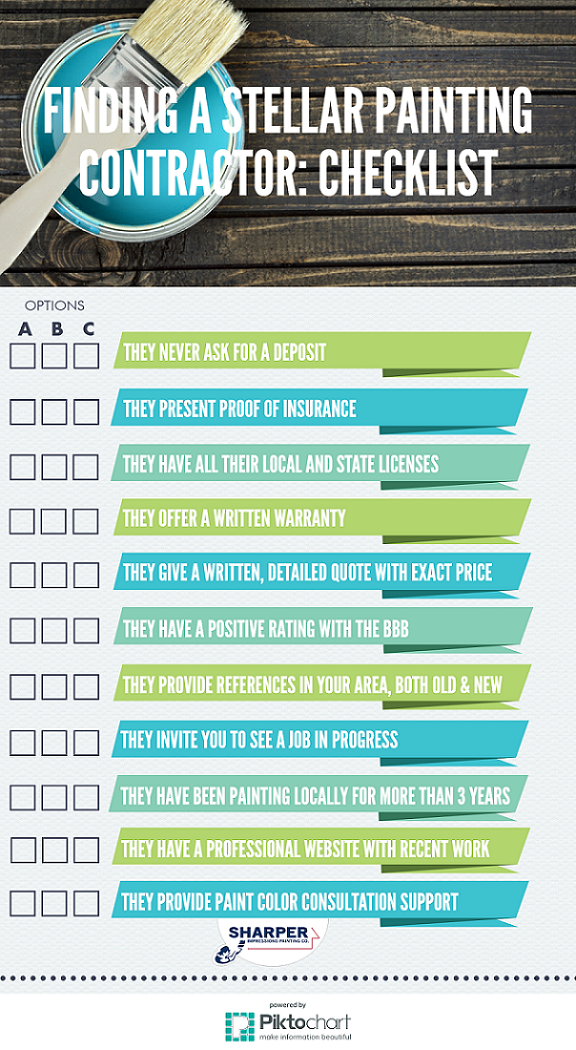Understand How Seasonal Conditions Impact The Success Of Industrial External Paint And Learn The Suitable Periods To Ensure Durable End Results For Your Task
Understand How Seasonal Conditions Impact The Success Of Industrial External Paint And Learn The Suitable Periods To Ensure Durable End Results For Your Task
Blog Article
Post Writer-Doherty Chaney
When you're preparing an industrial external painting job, seasonal variables can make or break your results. You'll wish to think about how temperature level and moisture effect paint application and drying times. Selecting the best period can guarantee your paint sticks effectively and lasts longer. Yet which seasons are really the very best for this kind of work? Let's explore the crucial elements that can affect your project's success.
The Effect of Temperature on Paint Application
When you're preparing an industrial outside painting task, the temperature can significantly affect exactly how well the paint sticks and dries.
Preferably, you intend to repaint when temperature levels vary in between 50 ° F and 85 ° F. If it's too cool, the paint might not cure appropriately, causing problems like peeling or breaking.
On the other side, if it's as well hot, the paint can dry out also quickly, preventing proper adhesion and resulting in an uneven surface.
You need to likewise take into consideration the moment of day; early morning or late afternoon provides cooler temperature levels, which can be extra beneficial.
Always inspect the manufacturer's referrals for the particular paint you're using, as they frequently supply advice on the excellent temperature variety for optimum outcomes.
Humidity and Its Effect on Drying Times
Temperature isn't the only ecological element that affects your commercial outside painting project; moisture plays a considerable function as well. High humidity degrees can reduce drying out times significantly, influencing the general top quality of your paint work.
When the air is filled with moisture, the paint takes longer to heal, which can result in problems like inadequate attachment and a higher danger of mold growth. If you're repainting on a specifically moist day, be planned for extensive wait times between layers.
It's vital to keep an eye on regional weather and plan as necessary. Ideally, go for simply click the next site in between 40% and 70% for optimum drying out.
Keeping these factors in mind guarantees your job stays on track and provides an enduring finish.
Best Seasons for Commercial Exterior Paint Projects
What's the very best season for your commercial exterior paint jobs?
Springtime and very early loss are normally your best choices. During these periods, temperatures are moderate, and moisture levels are frequently lower, producing excellent problems for paint application and drying out.
Prevent summer season's intense heat, which can cause paint to completely dry as well promptly, leading to poor attachment and finish. Likewise, winter's chilly temperatures can hinder appropriate drying and treating, risking the long life of your paint work.
Go for days with temperature levels in between 50 ° F and 85 ° F for optimal outcomes. Remember to check https://manuelrajsb.ssnblog.com/33383468/looking-for-the-perfect-house-painters-discover-the-insights-that-can-lead-to-a-stunning-home-makeover-and-improve-your-property-value-by-as-long-as-7 for rain, as damp conditions can spoil your task.
Preparation around these factors ensures your paint project runs smoothly and lasts longer.
Final thought
In conclusion, preparing your industrial external paint tasks around seasonal considerations can make a considerable difference in the outcome. By organizing work throughout the suitable temperature levels and humidity levels, you'll guarantee much better attachment and drying out times. Remember to keep an eye on neighborhood weather prediction and select the correct time of year-- springtime and early loss are your best options. Taking these steps will certainly assist you accomplish a resilient and expert coating that lasts.
